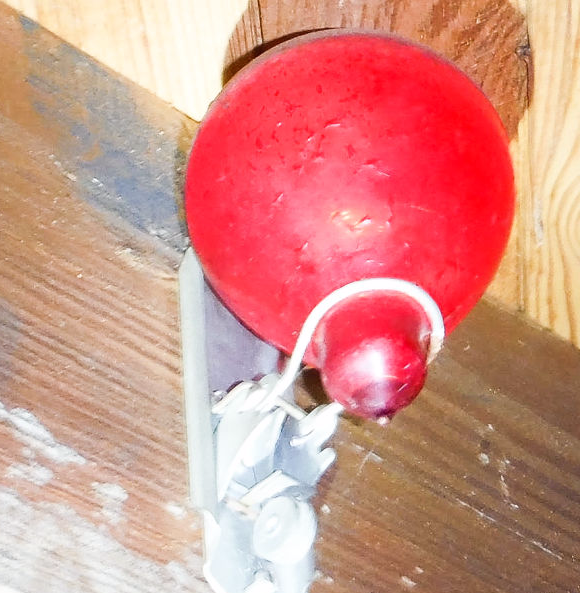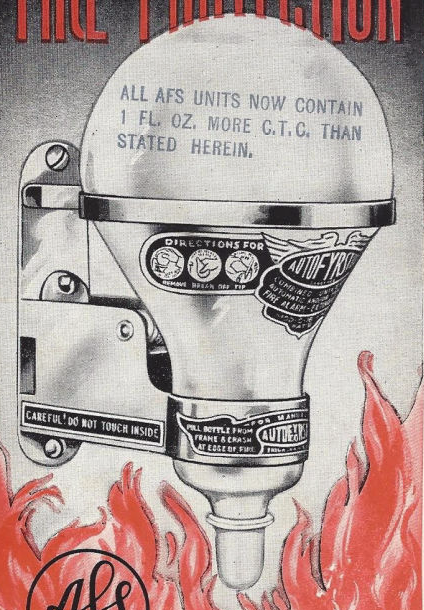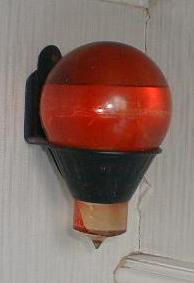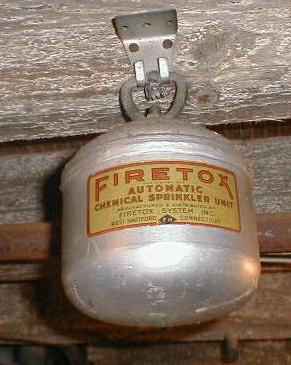


Common Fire safety Device in Old Buildings - could be a health hazard.
Any house that's been around for a half century or more has probably contained its share of safety gadgets. Some get discarded after a fad has ended or have been proven ineffective or outdated. One type of fire safety device that was once common has surprisingly survived in many homes and businesses for over 100 years. Unfortunately, many of these devices aren't very safe.
The earliest “fire suppression grenades” were hand-blown glass balls, often patterned and colored. They usually contained only about a pint of salt water and were intended to be thrown at a fire where the glass would shatter, dispersing the water. Probably not very effective for any type of significant fire.

At around the beginning of the 20th century, the design changed to industrial-made glass balls, smooth and either clear, frosted or red color-coated glass. About this time, many of the devices contained a fire-suppression chemical rather than salt water.
Many of the mounting brackets not only held the glass balls at the ready, but had a method of automatically releasing the devices when exposed to high temperature. Some had a heat activated trigger to pierce the glass. There is a different type that is an all metal canister that has been pressurized and has a heat activated sprayer head.

The fire-suppression chemical is usually carbon tetrachloride. This is officially listed as a probable carcinogen and can be really nasty if it is inhaled, ingested or absorbed. Worse yet, when CTC is exposed to open flames (like if it was thrown on a fire), it can produce phosgene gas (nerve gas).
When I discover these devices in buildings, I advise clients that they should be carefully removed and safely disposed of. The local environmental department or fire marshal should be consulted for safe removal and proper disposal. They should not be dumped in the trash or listed on Ebay as a collectible.

Common Brands: AutoFyrStop, Fire Chief, Firex, Guard-X, Hayward Hand Grenade, Marvel Kill-Fyr, Miracle, Pyrene, Red Ball Co, Red Comet, Shur Stop,

Bill Kibbel is a consultant and an inspector of historic homes
& commercial buildings at Heritage Building Inspections.
This web page was built with Mobirise website templates